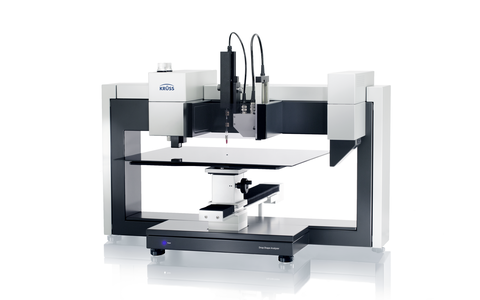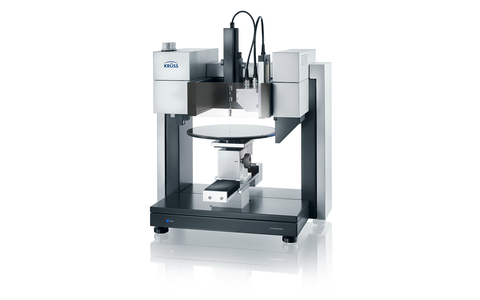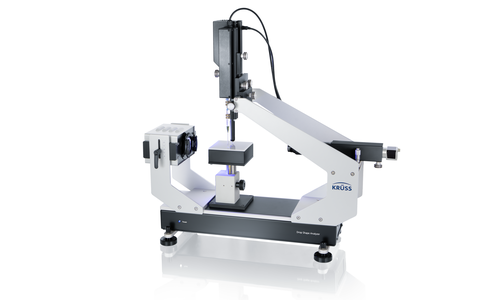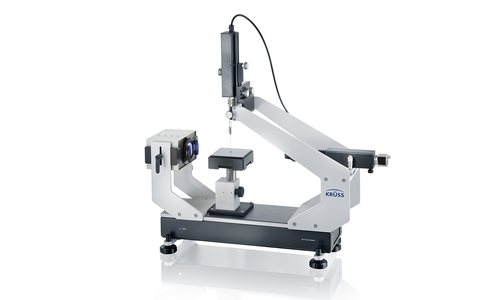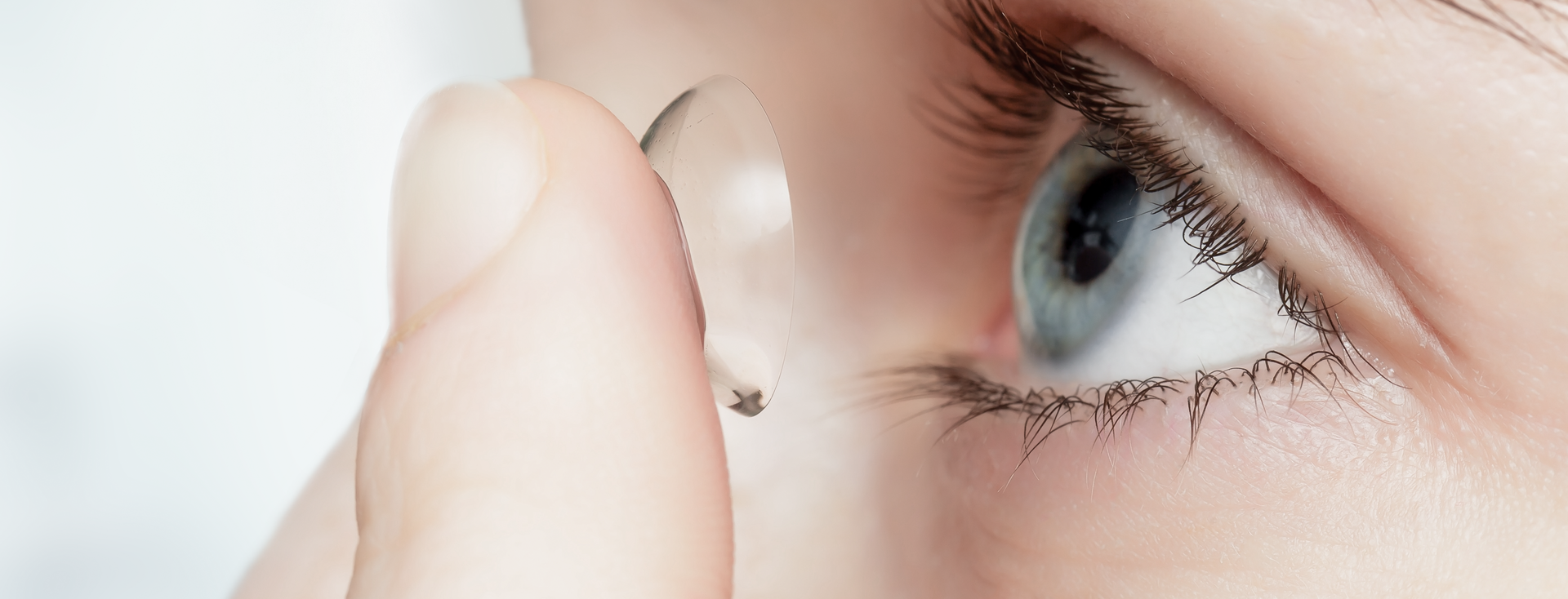
Wettability of contact lenses
Contact angle measurements for ensuring quality and the development of biocompatible materials
Soft contact lenses do not lie directly on the cornea but float on a thin film of tears. The length of time for which the lens is compatible, particularly when worn for a long time, depends on the permeability to oxygen and on the wettability by the lacrimal fluid. This wettability can be determined with the help of our optical instruments. Measurement of the contact angle helps in the development and quality assurance of biocompatible materials by enabling the long-term wettability and the pre-treatment of the lens surfaces to be analyzed.
Checking the wettability and pre-treatment by means of contact angles
Lenses which are intended to be worn for a long time are usually hydrogels with a silicone content. The silicone component ensures good permeability to oxygen but is hydrophobic. On the one hand, this reduces wetting by the lacrimal fluid; on the other hand, hydrophobic lipids accumulate more easily on the lens and contaminate it. Both effects make them less comfortable to wear. Contact lens manufacturers improve the wettability by increasing the surface energy and polarity of the lenses by coating, surface pre-treatment or the incorporation of hydrophilic groups. In order to check the improved wetting, the contact angle of the lens surface with water or a tear-like liquid can be measured. A small contact angle indicates good wetting and, at the same time, suggests a low adhesion of contaminating lipids.
Approximation to wearing conditions
For measuring the contact angle on contact lenses, we have developed a sample holder which simulates the curvature of the eye. Our software has likewise been optimized with a curved contact line (baseline) between liquid and surface for carrying out measurements on contact lenses. The captive bubble method lends itself for simulating the conditions of the continuously wetted contact lens from a measurement point of view. Here, the contact angle of an air bubble is measured on a permanently immersed lens so that the structure of the hydrogel does not change. This also enables the long-term wettability to be measured in order to investigate the time for which the lens can be worn. Dynamic measurements of the advancing and receding angle simulate wetting and de-wetting when blinking. When the eyes are closed, the film of tears is forced over the lens surface (advancing angle). Opening the lids is associated with a partial de-wetting of the eye (receding angle). Both angles are measured with the help of a software-controlled dispensing system which specifically increases and reduces the size of the drops or air bubble on the lens. The difference between the two angles is a measure of the film stability and indicates the wetting behavior of the lens in the eye.




